Lincoln Electric Invests in Workforce and the Future
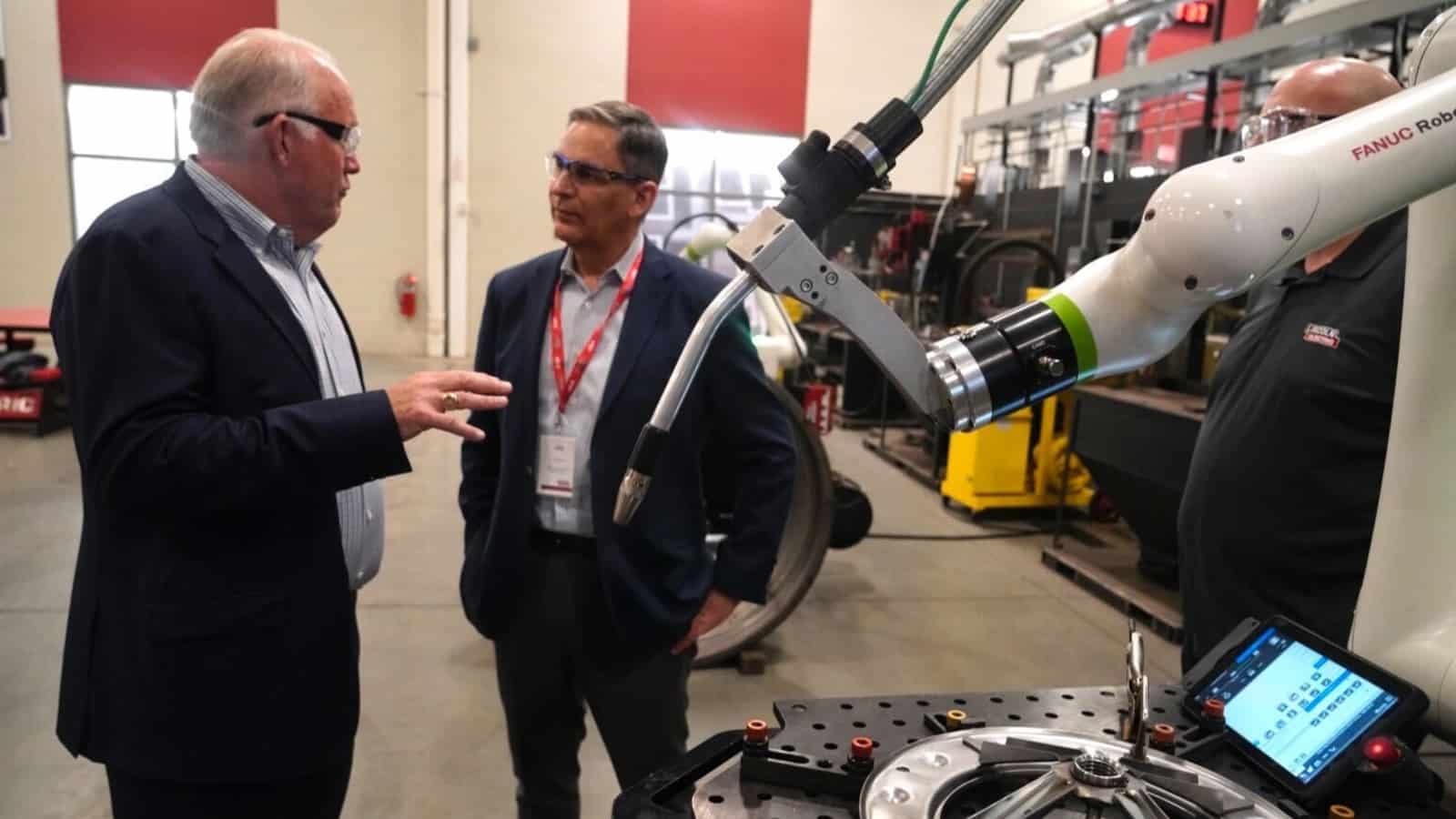
Ahead of Thursday’s 2022 NAM State of Manufacturing Address, NAM President and CEO Jay Timmons was in Cleveland, Ohio, where he visited Lincoln Electric—a global manufacturer of welding products and equipment—to discuss the state of the industry.
Trailblazing training: At Lincoln Electric, they’re not just operating the longest continually running welding school in the world. They’re also offering cutting-edge tools for new students and making sure that the people who come through their training center are well prepared for the world of tomorrow.
Welding Technology and Training Center: At the WTTC, participants learn in a $30 million state-of-the-art facility designed to help train students for new careers and to upskill welders to take on new roles and responsibilities.
Virtual Reality Welding Solutions: Not all training needs to happen in the real world. The VRTEX® virtual reality arc welding trainers offer high-tech learning solutions for students and professionals alike, along with learning tools designed specifically for educators.
A helping (bionic) hand: Finding skilled welders can be tough. However, plenty of jobs in the welding industry don’t come with a steep learning curve. To help expand their workforce and improve productivity and efficiency at their facilities, Lincoln Electric has invested in collaborative robots that offer easy automated assistance with a simple, user-friendly interface that non-welding professionals can use.
Strengthening supply chains: One challenge for manufacturers throughout the pandemic has been the burden placed on international supply chains, which has caused long delays and uncertainty around shipping. Lincoln Electric has the only wire-based additive manufacturing factory in the United States for 3D-printing large metal-based industrial components, replacement parts, tooling and molds—products that have traditionally been cast and sourced internationally. Through their innovation and domestic production, they can create parts in days or weeks that would otherwise take six months or more to build.
Lincoln’s line: “We are pleased to welcome Jay and the NAM team to Lincoln Electric and have the opportunity to showcase our industry-leading workforce training and development solutions, as well as innovative automation and large-scale additive solutions that address the manufacturing sector’s need for added operational capacity to drive growth and shorter, more reliable supply chains,” said Lincoln Electric Chairman, President and Chief Executive Officer Chris Mapes.
Our take: “From the management that has built state-of-the-art training facilities to the employees who have used that training to build a rewarding career, this is an example of a team that is more than the sum of its parts,” said Timmons. “It was energizing to see all the incredible work that Lincoln Electric is doing to invest in its workforce and the wider community.”
More stops: The State of Manufacturing visit is reaching other Cleveland-area manufacturers including Jergens, Synthomer and STERIS Corporation.
Tune in: The State of Manufacturing address is this Thursday! Tune in here.
How to Attract Workers

A record number of people quit their jobs in 2021, and companies are scrambling to find ways to attract new workers, according to CNN.
What’s happening: With almost 11 million open positions at the end of 2021, employers have begun “to sweeten their offerings in terms of benefits, pay and flexibility.”
Greater work flexibility: One of the perks that seems to be helping retain some workers is increased flexibility in work schedule, a finding in line with the results of a recent Manufacturing Institute–BKD study:
- Fifty-six percent of respondents “noted a need for increased worker flexibility, and roughly half had reevaluated what work could be done remotely where possible. With that, 41% said that their business was working to reengineer the production process with social distancing in mind.”
- The MI recently held a roundtable discussion on this very topic. Get a free recording of the webinar here.
Pre-job paid vacation: Workers are also responding favorably to paid time off—before they start a job.
- One “company started offering ‘pre-PTO’ that offers new hires a week of paid time off before their first day of work. … [It] created a task force that spoke with recruiters, current employees and candidates who had turned down offers at the firm, to come up with innovative ways to solve the hiring challenges. ‘Without a doubt, PTO-related new benefits were the most popular,’” the firm’s chief people officer said.
Quick offers, more cash: A health care provider has begun offering sign-on bonuses of up to $17,500 for particularly hard-to-fill remote jobs, and it gave every employee a 4% raise in 2021.
- Said the company’s executive vice president: “For many of our roles that don’t require licensure or certification … you show up, get a same-day offer and begin work the following Monday, if possible.”
The Direct Link Between Child Care and Women Workers

The gender gap in the Great Resignation is widest in states with the most child care disruptions, according to Axios and a report from payroll company Gusto.
What’s happening: “Nationally, 4.1% of women quit their jobs in January compared with 3.4% of men—a 0.7 percentage point difference. But in Maine and Rhode Island—where around 45% of families reported COVID-related child care disruptions in the Census Household Pulse Survey—the gender gap swelled to 1.7 percentage points, Gusto found.”
- “At the same time, in Missouri and Arizona—where less than 25% of households said child care was disrupted—the gender gap was close to zero.”
Why: Women still disproportionately shoulder responsibilities for child care and are also likelier than men to take on child care duties while working from home, according to Axios.
- In addition, “as omicron cases fall, schools are reopening. But many child care centers have closed down due to COVID pressures, like staff shortages and lockdowns. And the availability of affordable, high-quality child care remains a growing problem.”
A related, worrisome work trend: Nationwide, parents (particularly mothers) are turning down job opportunities and missing work because of a severe shortage of school bus drivers.
- The lack of available operators has schools from Indiana to Texas canceling bus routes, leaving parents to scramble for transportation.
The NAM says: “Women are an integral part of the workforce, and while they’ve begun to return, more must be done to attract them,” said Manufacturing Institute President Carolyn Lee. “Unfortunately, finding high-quality child care is still a difficulty for many parents.”
“Manufacturing is an industry that continues to outperform others when it comes to pay and benefits—including child care. We’re seeing members such as Vermeer Corp. and Wisconsin Aluminum Foundry Company provide or subsidize quality care. That’s the sort of benefit that’s going to bring parents into manufacturing.”
WAFCO Seeks a Child Care Solution to the Labor Shortage
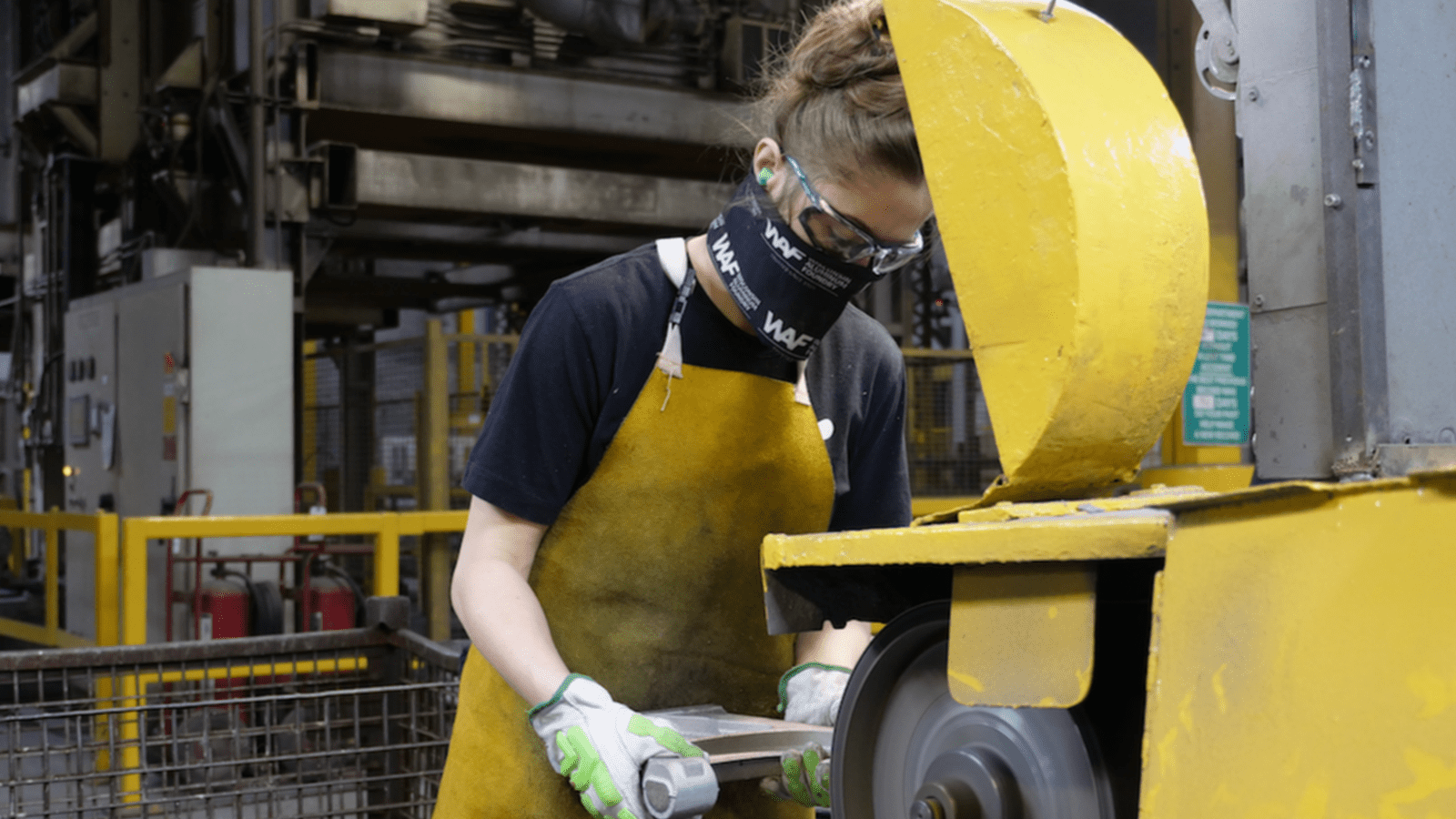
It all started with a conversation in a parking lot.
Wisconsin Aluminum Foundry CEO Sachin Shivaram was chatting with a second-shift employee outside the WAFCO building one evening last summer when he happened to glance into the man’s car.
- “[I notice] he’s got a car seat in there, so I ask him, ‘What do you do for child care?’” Shivaram recalled. “He said he’s a single dad of a 4-year-old daughter, and he takes her to a different [caretaker’s] house every night. I thought, ‘That can’t be a good environment for her.’ It got me thinking, ‘How can we help this man get better care?’”
Oasis needed: Shivaram aims to find out. While the top executive of a century-old aluminum casting and molding manufacturer may seem an unlikely advocate for affordable child care, helping employees care for their kids has practically become a business imperative for WAFCO.
- “When the frenzy of the labor shortage got going, we connected” child care and the inability to fill jobs, Shivaram said, adding that the Manitowoc area is a “child care desert” with few available spots in centers. “One day we had no women on second shift, [yet] women are 50% of the population. [That’s because,] unfortunately, the burden of caring for children falls primarily on women. We realized, ‘If we’re going to make a dent in the labor shortage, we have to fix this.’”
Lending a hand: So, the company started trying to do just that. On Shivaram’s watch, it began giving employees $400 a month in child care reimbursement, on top of its $27-an-hour median wage, health care benefits and double pay for overtime.
- WAFCO has also purchased spots, when available, at a high-quality local day care center owned by the wife of a company associate and subsidized the cost of those spots for employee children.
Doing even more: Then Shivaram learned about the state’s Workforce Innovation Grant Program, the aim of which is “to help the regions of Wisconsin solve their most pressing workforce challenges by financially supporting collaborative, sustainable and innovative pandemic-recovery plans developed by regional organizations.”
- In addition to setting aside $1 million of its own capital for the creation of a child care center, WAFCO applied for $5 million of grant money last year in the program’s first round. While the company didn’t get the funds then, Shivaram plans to redouble the firm’s efforts and apply for round two this year.
The response: “Employees love it,” Shivaram said of the child care subsidy. Of WAFCO’s approximately 580 employees, about 80 make use of the funds. “Even those employees who don’t have children of child care age say this is really helpful.”
What’s next: WAFCO has identified a site for the planned center, a former adult day care facility. It is also working with KinderCare Learning Centers, the Oregon-based childhood-education company, to decide on an operating model.
- “There will be a strong emphasis on early learning for 0-to-5-year-olds,” Shivaram said. “We’re not just going to have check-the-box child care. And we are committed to paying [child care workers] more than a living wage.”
Advice for other manufacturers: Manufacturers looking to offer child care help to their employees should chiefly remember one thing as they start to plan: You can’t go it alone.
- “This does take a coalition,” Shivaram said. “This is really businesses coming together to help a need in society that, if we don’t resolve it, is only going to make us less successful. This is not going to happen with one business [working] alone.”
Industry-wide efforts: WAFCO’s initiative is part of a larger wave of manufacturers offering increasingly competitive benefits—including child care—for their teams.
- The Iowa-based Vermeer Corp. has full onsite child care facilities for the children of its employees.
- Rockwell Automation, headquartered in Wisconsin, has a generous “caregiver leave” policy to allow workers to take paid time off to look after dependents.
- When schools were closed at the beginning of the pandemic, the Pennsylvania-based i2M employed teachers to host onsite learning “pods” for the children of employees. The company is now working on a similar setup for after-school care.
The NAM says: “As we look to close the skills gap and resolve ongoing talent shortages, manufacturers continue to outperform other industries when it comes to pay and benefits packages they offer,” said Manufacturing Institute President Carolyn Lee. The MI is the NAM’s workforce development and education partner.
- “Manufacturers are constantly finding innovative ways to provide quality-of-life-improving services, such as child care, health care options, leave and retirement savings, that will motivate and empower millions of manufacturing team members nationwide and make our industry more equitable and inclusive.”
Labor Shortage Will Continue, But Manufacturing Is a Bright Spot
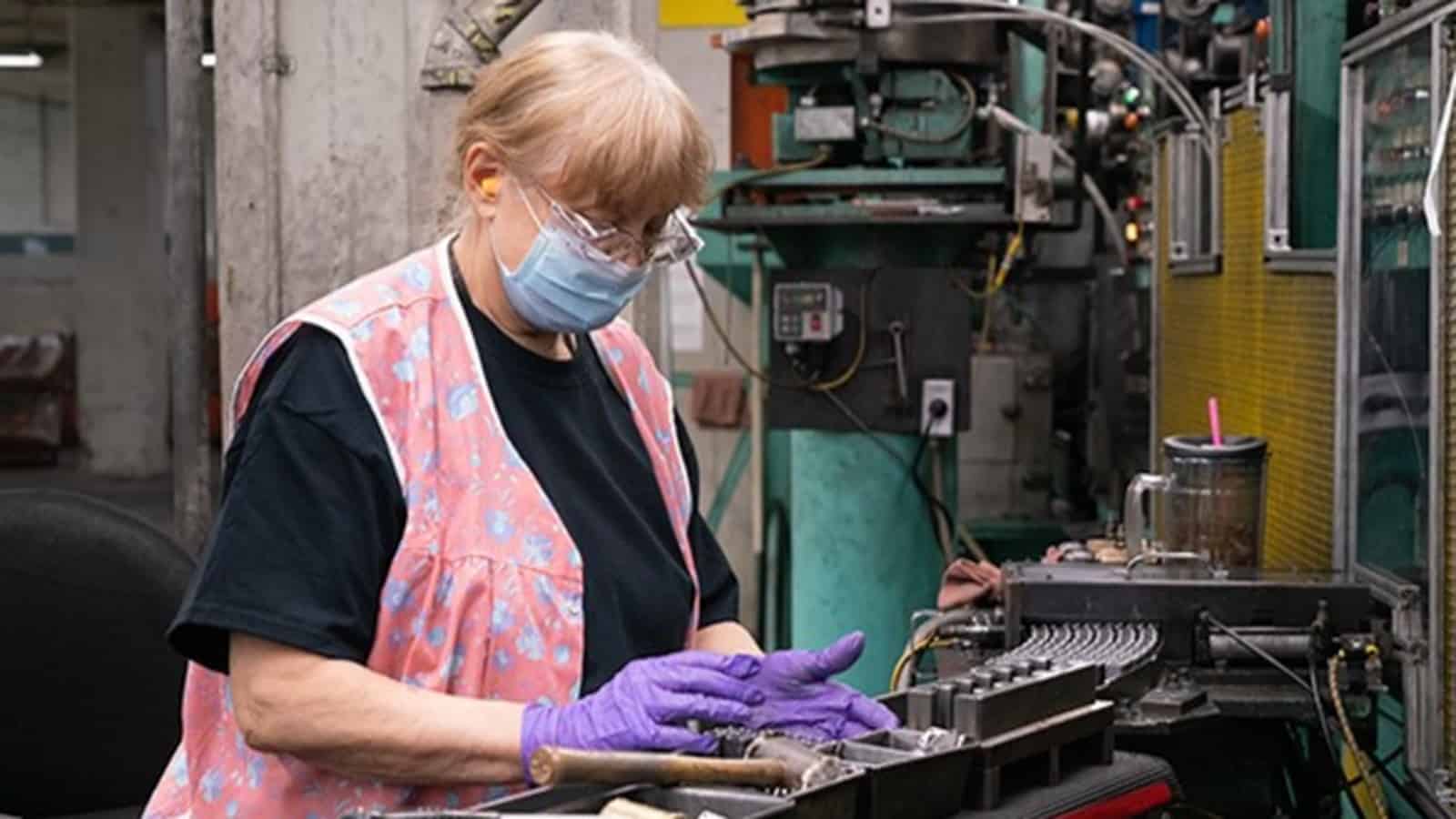
The future workforce will continue to ‘favor’ workers over employers, with the labor pool set to grow just 0.2% a year from 2024 to 2031, according to the Congressional Budget Office and Axios.
What’s happening: “In the 2010s, the massive millennial generation was entering the workforce, the massive baby boom generation was still hard at work, and there was a multi-year hangover from the deep recession caused by the global financial crisis. But now, boomers are retiring, millennials are approaching middle age, and the Gen Z that follows them is comparatively small.”
- Unlike in the recent past, organizations now and in the future won’t be able to count on “a flood” of job applicants for all advertised positions.
What it means for manufacturers: “On the one hand, manufacturers added 349,000 manufacturing workers in 2021, the most since 1994, and on the other, the sector has 219,000 fewer workers today than it did before the pandemic began,” said NAM Chief Economist Chad Moutray.
- “In addition, job openings remain near record highs, and firms continue to note difficulties in finding and retaining workers. In 2022, we would expect to add around 150,000 to 180,000 employees, building on last year’s strong gains.”
What it also means: “The reality of the labor shortage makes clear that we need an all-of-the-above solution to our workforce crisis,” said Manufacturing Institute President Carolyn Lee. “We need to attract new workers and provide them with the needed skills. That’s why the NAM and the MI’s Creators Wanted campaign is so critical and so timely. Research shows the next generation is looking for careers that matter. They want to have an impact, and they want the potential for family-supporting jobs with upward mobility, all of which are characteristics of modern manufacturing.”
“This data also underscores why we also need comprehensive immigration reform to ensure that we are bringing the best and brightest to the U.S. to help strengthen manufacturing in America.”
Ducommun’s #MFGDay21 Was a Roaring Success
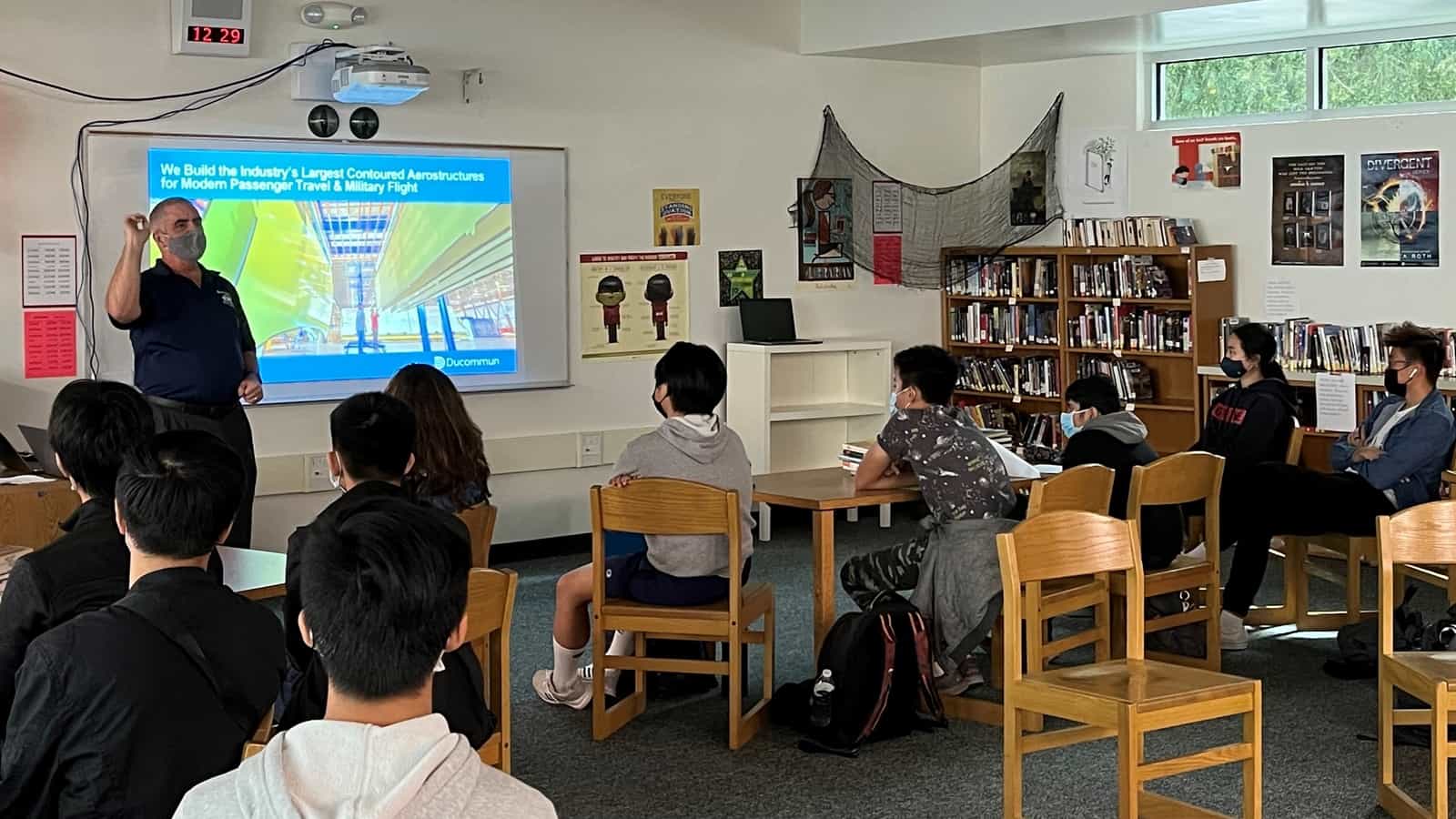
It would have been an impressive feat no matter what, but Ducommun’s achievement of a robust and highly attended MFG Day 2021 was made all the more remarkable by the fact the company had been an NAM member for just nine months.
MFG Day, an annual program of the NAM’s nonprofit workforce development and education partner, The Manufacturing Institute, highlights the opportunities and potential of modern manufacturing careers by encouraging thousands of companies and educational institutions around the nation to open their doors to students, parents, teachers and community leaders.
“As a leader in innovative manufacturing, Ducommun supports National Manufacturing Day, as well as other education and community-based STEM programs and initiatives, that nurture and develop the next generation of creators, builders, technicians and innovators,” said Chonta Salts, Ducommun corporate HR business partner. “Our goal for MFG Day was to engage with students, parents and educators to broaden their understanding of modern manufacturing and to highlight the range of full-time opportunities, internships and part-time summer jobs available to them.”
Their MFG Day: Ducommun, a 172-year-old Santa Ana, California-based provider of technology-driven structural and electronic solutions for the aerospace, defense and industrial markets, coordinated employee and representative visits with 11 high schools and colleges nationwide. Each school is local to one of Ducommun’s U.S. manufacturing performance centers.
- Events were held in person at Ducommun, in classrooms at local schools and online through livestream. Ducommun leadership teams, engineers, technicians and production team members engaged with students about what a career in modern manufacturing is really like—and how much room it offers for professional growth and advancement.
- “Employees shared their own success stories: starting out in entry-level production positions, completing training programs to advance to technical, engineering or other professional positions and what they do in their current role,” said Ducommun Vice President and Chief Human Resources Officer Rose Rogers. “I think that’s a key component of rolling it out. You have to engage with students at their level. By having our employees connect with the students, they were able to ask questions directly to our employees.”
What they did: Ducommun’s MFG Day success was bolstered by the fact that the company has long been involved in sponsoring local-school science, technology, engineering and math (STEM) activities. So come October, it already had many connections at nearby schools.
- Ducommun team members attended the virtual training sessions offered on the MFG Day section of creatorswanted.org,Salts said.
- Using the site’s resources page, Salts worked with the company’s communications team to transform their standardized presentation into one for high school audiences that could be easily customized by HR leaders responsible for local events.
- Rogers and Salts “got buy-in and feedback from senior leadership” early in the planning process.
- They ensured their events were dynamic, interactive and interesting to the students because “we didn’t want to sit them in a conference room, watch a presentation and wish they were back at school!” Rogers said, with a laugh.
Facts and figures: Ducommun started its MFG Day planning “months” in advance, Salts said, and the work paid off. Here are some of the specific results:
- More than 500 students attended and participated in Ducommun’s MFG Day events.
- There were five in-school presentations by Ducommun team members.
- The day included 17 student presentations.
- There were six onsite visits by students to Ducommun performance centers.
- The day had one virtual presentation.
The payoff: Ducommun’s participation in MFG Day is part of its commitment to build the next generation of creators and innovators, Salts said. Though it’s still too early for the company to have reaped the workforce rewards of its autumn outreach, Rogers said it has received a great deal of interest from students about full- and part-time jobs after graduation. Ducommun expects to fill many open positions in late spring and summer 2022.
- “We invested in MFG Day because one of our core beliefs and commitments is to support the communities where we live and work,” Rogers said. “We emphasized that working at Ducommun wasn’t going to be just a job—this could be a long-term play for students because they can build a career with us. Being able to engage with them was invaluable.”
For more information on MFG Day and how to host a successful one next year, visit www.creatorswanted.org/resources/.
Parts Life, Inc. Family of Companies Builds Employee Homeownership

At the Parts Life, Inc. family of companies (Parts Life, Inc.; DeVal Life Cycle Support, LLC; and LC Engineers), they’re not just working to solve product obsolescence, they’re also making it possible for employees to put down roots in their community.
The company, based in Moorestown, New Jersey, works with all military branches, original equipment manufacturers and prime contractors in aerospace and defense to manufacture critical components that extend the life of mission-critical assets. Through a novel initiative, Parts Life also offers loans to employees to help them buy homes.
How it started: The Help U Buy program, or HUB, was the brainchild of founder and CEO Sam Thevanayagam, who knows just how important a home can be.
- “The primary way that you create capital for yourself is to buy your first home,” said Thevanayagam. “I downsized my first home and bootstrapped Parts Life. I used my home as collateral to fund the acquisition of another company. Most things are funded by using your home as collateral.”
Thevanayagam thought up the program three years ago. After a few conversations with his Human Resources Department, he formalized the initiative and set it in motion.
How it works: The company offers interested employees a forgivable loan, and the employees work it off through service over the course of five years, with no additional responsibilities. According to Thevanayagam, more than 25 people have taken advantage of the program since he created it—including 17 employees in the last year alone.
- “We want every single person who works for us to be part of the American Dream,” said Thevanayagam. “When you own your first home, that sets you up for everything else. It gives you stability.”
The impact: Thevanayagam believes that the culture of a company is critical and that the HUB program speaks to Parts Life’s commitment to its employees. Parts Life also focuses on training designed to strengthen employees’ skill sets. The company frequently fills new positions by promoting from within as a demonstration of its investment in its workers.
- “It’s mutually beneficial, because it’s helping people become more valuable to the organization and themselves,”said Thevanayagam.
The last word: “My purpose is to create an environment where others can meet their God-given potential,” said Thevanayagam. “It’s a CEO’s responsibility to have the right culture. At the end of the day, I’m the bearer of that culture. I help create it, defend it. I take that job very seriously. It’s like gardening; you have to create the environment and make sure you’re working on it carefully so people have chance to grow and bloom.”
A Helicopter Mechanic’s Manufacturing Career Takes Off
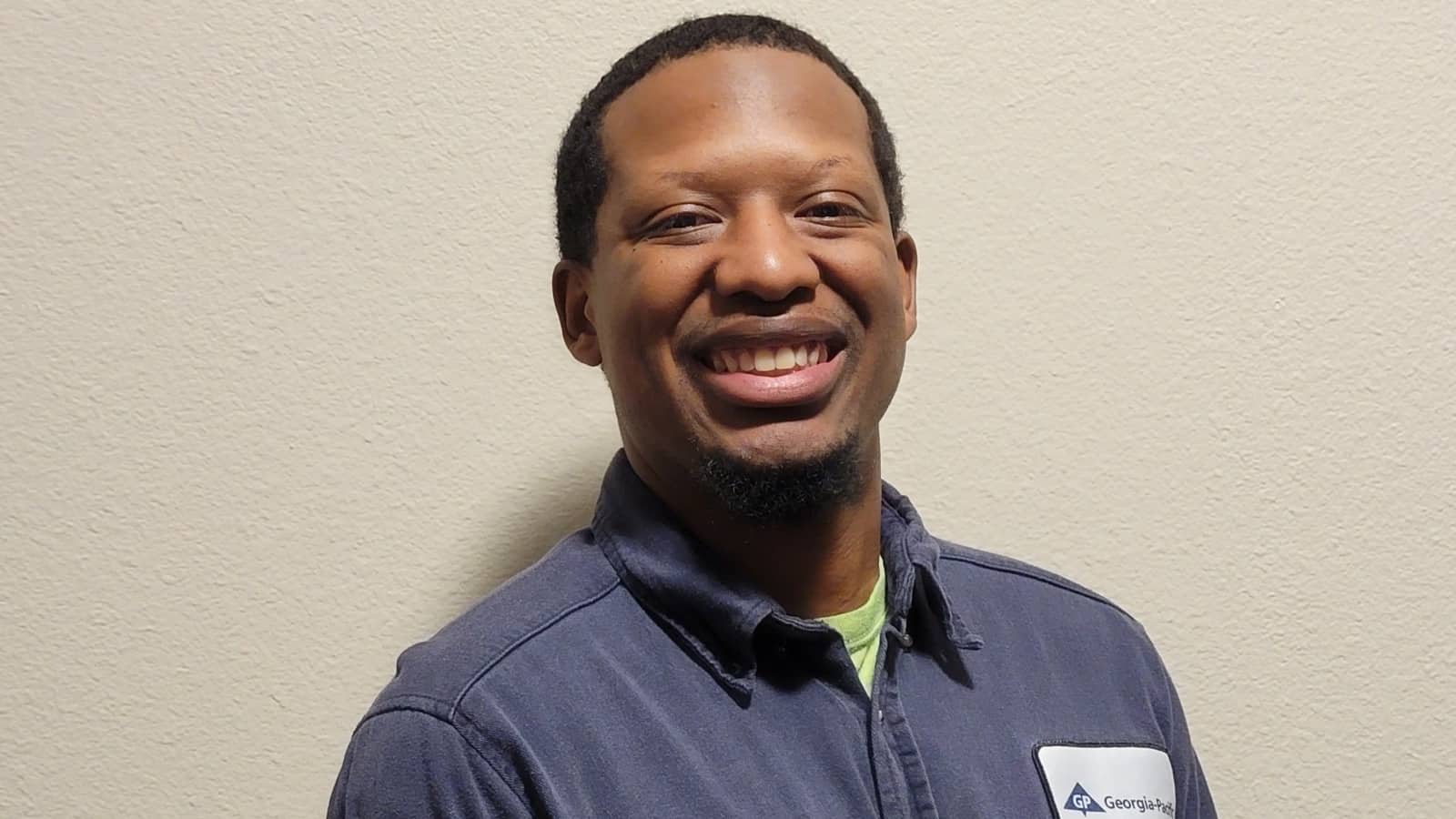
Marsalis Leonard didn’t grow up in a gearhead family, but from the beginning of his eight years as a helicopter mechanic in the U.S. Army, he was immersed in a world of skills he would never have anticipated seeking out on his own.
- “The Army was my introduction to mechanics,” said Leonard. “It taught me how different machines and processes work together, but it also taught me how to grasp hands-on knowledge and put it to use.”
A new career: That kind of experience served Leonard well when he transitioned out of the army in 2020. He had considered working in civilian aviation, but the process would have required additional education and a range of specific certificates. For Leonard, more school wasn’t a priority—and when he learned about the Manufacturing Institute’s Heroes MAKE America program at Fort Campbell, Kentucky, it seemed like a perfect opportunity to get started in a new field by putting his existing capabilities to use.
- “I wanted to jump into something with the skills I already had,” said Leonard. “Heroes MAKE America seemed like a great place to enhance my skills and turn them into a new career.”
An immersive program: The MI—the workforce development and education partner of the NAM—designed Heroes MAKE America as an integrated certification and career-readiness training program that helps prepare transitioning service members, veterans, National Guard members, reservists and military spouses for careers in manufacturing. The initiative offers in-person trainings and remote training options, as well as career support and placement. So far, the program has a 90% placement rate with graduates in 42 states across the country.
A learning opportunity: While Leonard brought plenty of his own experience to the table, Heroes MAKE America still offered valuable information and practical training in industrial maintenance that he continues to use today.
- “It was very enlightening,” said Leonard. “Heroes gave you an education in basic electronics, pneumatics, hydraulics and mechanics. It taught you to read schematics and diagrams, which was probably the first thing I was able to grasp. It was very hands-on.”
A new path: Through his experience in Heroes, Leonard was hired as a maintenance technician at a Waxahachie, Texas, facility owned by Georgia-Pacific—a pulp and paper manufacturer based in Atlanta, Georgia. While the role may be different from his experience in the military, the Heroes program prepared him to take on his new challenges.
- “I learned an insane amount,” said Leonard. “At first, it seemed overwhelming the amount I didn’t know. But I also was able to see people who have been in the industry for years—and they started out as kids with no experience. So, you work hard, pay attention, ask questions and learn from your mistakes. You’ll learn something—and you’ll use that knowledge.”
Get involved: Want to support Heroes MAKE America? Click here to learn more.
ABB Apprentices Join the Next Generation of Manufacturers
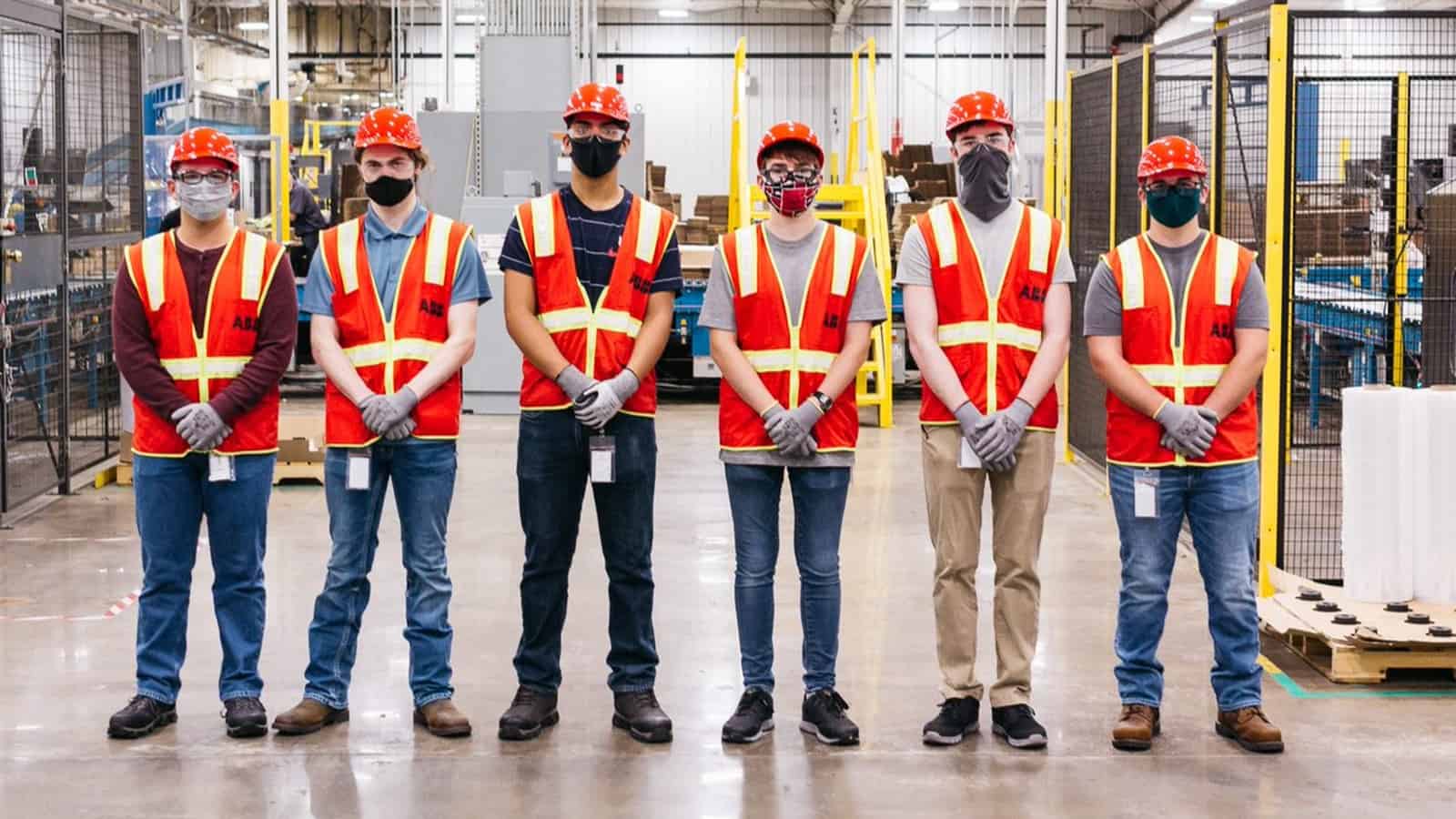
As manufacturers work to fill the skills gap and hire more employees, some are modernizing a tried-and-true approach: taking on apprentices. In Fort Smith, Arkansas, ABB—an industrial electric motor and robotics manufacturer—is leading the way with its innovative program for local high school students.
How it works: Apprentices work three hours per day, four days per week during the school year and then 40 hours per week during the summer. ABB trains them in a range of roles to provide them with a strong foundation in manufacturing skills and the ability to work their way into an advanced technician role.
A win-win: “These students are getting paid, and paid well for a part-time job,” said ABB Vice President of Operations Johnny McKusker. “They learn a variety of skills that most juniors and seniors in high school aren’t exposed to. And if they decide they like manufacturing and want to stay on, then we’re getting a person who joined us early, has had a lot of training and investment and is able to contribute at a high level early in their career.”
What comes next: Last year, nearly all of ABB’s apprentices took on permanent roles within the company after graduating. They were also able to continue their education through a local university, with ABB providing tuition reimbursement to help them pay for it.
A pitch for manufacturing: “Manufacturing as a career has changed significantly in the last 25 years,” said McKusker. “It’s not hot, dirty and dangerous work. Instead, it offers technical skill development and an opportunity to earn a good living.”
The experience: According to at least one participant in the program, the apprenticeship has been an excellent way to learn important skills and gain experience in a real work environment.
- “My experience has been great,” said Nadia, a current apprentice working on the digital solutions team. “It’s given me the opportunity to learn about manufacturing, but also about bonding and building relationships with my colleagues. I’m getting the experience of what a real job would be like outside of school.”
The last word: “I want to continue working for this company,” said Nadia. “I took this apprenticeship because ABB was my dream job from the start, because of how great they are in industrial engineering. Seeing the opportunities here and seeing how they take care of bonding and relationship building—it’s something I really like and appreciate.”
“You Guys Rock”: Creators Wanted Inspires Dallas/Fort Worth
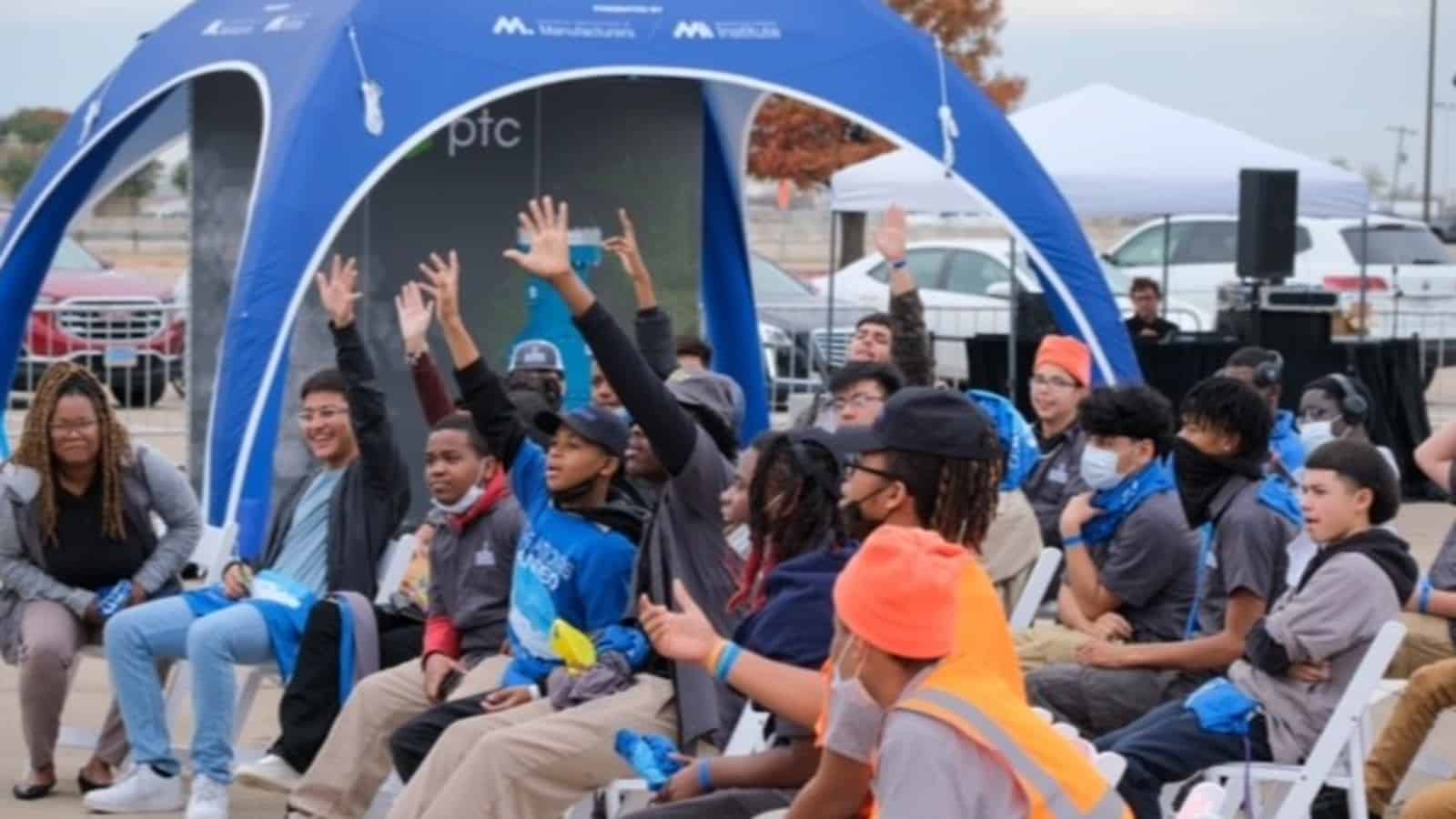
As the final 2021 stop on the Creators Wanted Tour Live circuit, Dallas/Fort Worth had quite a few expectations to live up to—and live up to them it did.
Big impact: With more than 1,000 students attending events, participating in panel talks and discussions and “racing to the future” in the Creators Wanted immersive experience, the Dallas/Fort Worth visit of the joint NAM/Manufacturing Institute project designed to inspire and educate the next generation of manufacturers had a very large audience—and a receptive one at that.
- “When we first mentioned it to them, they had never heard of Creators Wanted,” said Roberta Woodard, a high school professor at TCC South Collegiate High School in Fort Worth, of her students, who attended the Creators Wanted events. “But they were really excited about obtaining any information that they could to help prepare them for graduation.… These kids have [now] shown a great interest in hopping into the workforce as soon as they graduate.”
A truly hands-on experience: During the four-day tour stop, students, teachers and parents were able to try out numerous activities related to manufacturing, including using the VRTEX virtual reality arc welding training system and piloting drones at the Fort Worth Independent School District’s mobile STEM lab, exploring Vuforia augmented reality by PTC, interacting with displays by, and meeting creators at, Stanley Black & Decker, Cornerstone Building Brands, CRH and Nucor and completing the puzzles and escape-room challenges in the Creators Wanted mobile experience.
The chance to see and feel manufacturing firsthand was a game-changer for many attendees.
- “Sometimes it’s hard to teach students from a textbook, or even from online materials,” said Tuan Tran, professor of career and technical education at TCC South Collegiate High School. “And when they see real people here in front of them, talking to them, it gives them a little bit of a peek into what’s possible in the future.”
Family and money: One of the possibilities when it comes to manufacturing careers is the opportunity to make a very comfortable living, and to do so in an environment that values its employees, panelists told Creators Wanted attendees.
- “Now more than ever we need people in trades, we need people in the manufacturing industry, so manufacturing companies are starting to pay [what] you’re worth,” Oldcastle Infrastructure Plant Manager Brandon Castillo said during a Creators Wanted panel talk and Q&A session, echoing the findings of a recent joint MI–Deloitte study, which found that if the U.S. continues on its current trajectory, the U.S. will have more than 2 million unfilled manufacturing jobs by 2030.
“For me, it allows me the ability to take my kids to Disneyland or Disney World and just do a bunch of family activities that I’m not sure would be afforded to me if I didn’t choose manufacturing.”
- Added Blaire Basham, who is in human resources at Nucor Corporation’s Business Technology division: “We are a family first and a company second. Also, the biggest thing that we love is to make money, because who doesn’t? Money is our motivator.… Family and money, what can be better than that?”
Students had the opportunity to draw insights from not just the exhibitors, but also from Celanese, Specialty Packaging, Georgia-Pacific and the MI’s Heroes MAKE America initiative.
News nods: Texas and national media outlets, including the Fort Worth Business Press, NBC 5 Dallas/Fort Worth, KRLD Morning News 1080, The Dana Show and The Dan Bongino Show covered Creators Wanted Tour Live Dallas/Fort Worth.
Highlights from the stop: Here is a glance at some of the action:
Crowley High School students watch, mesmerized, as they see the laser engraver—and modern technology—help them unlock the next room of the immersive challenge. More than 74% of students who were skeptical about manufacturing left the experience either very or somewhat interested in learning more about manufacturing careers.
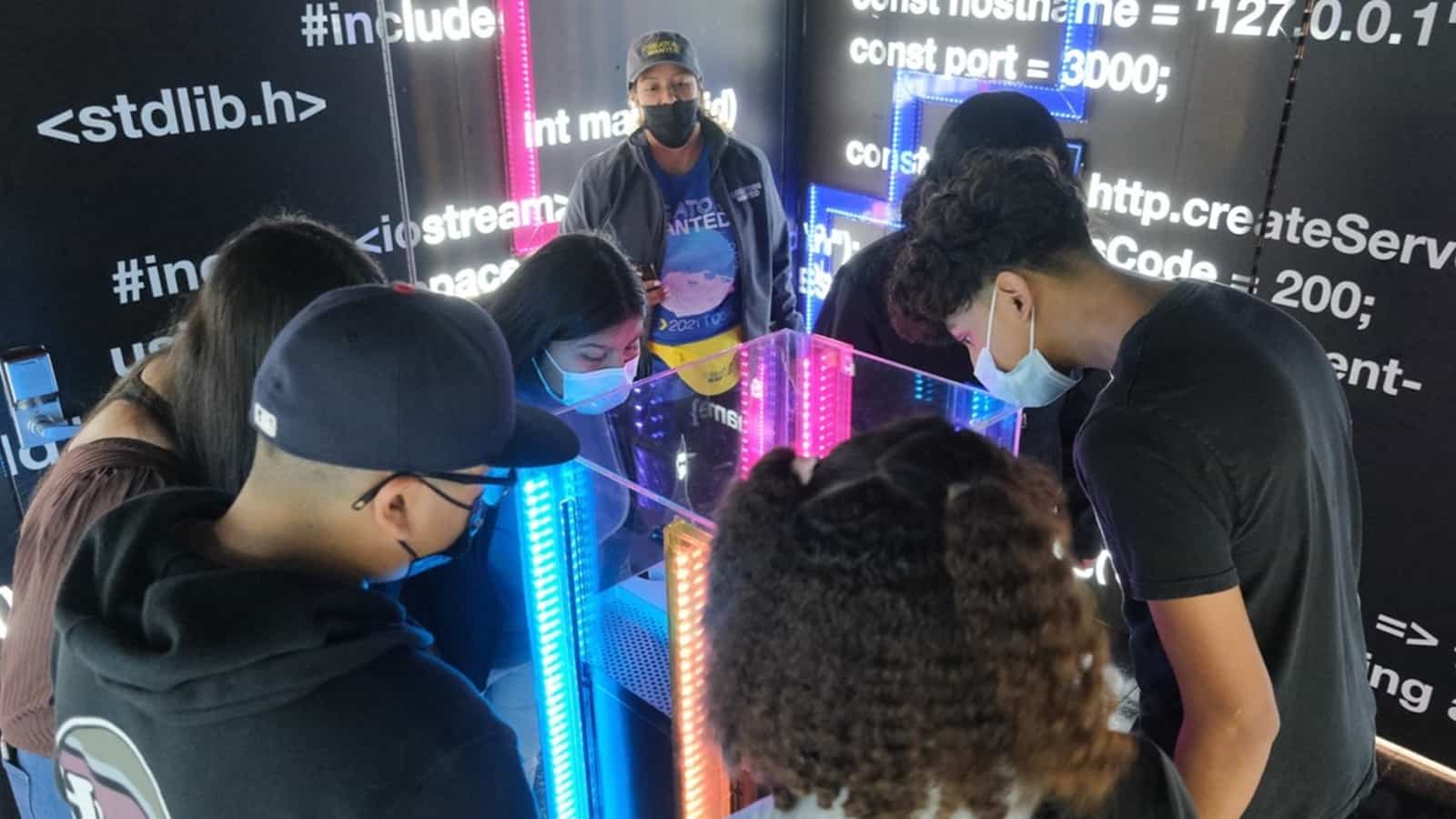
Students from Tarrant County College South hear about the career paths at Stanley Black & Decker.
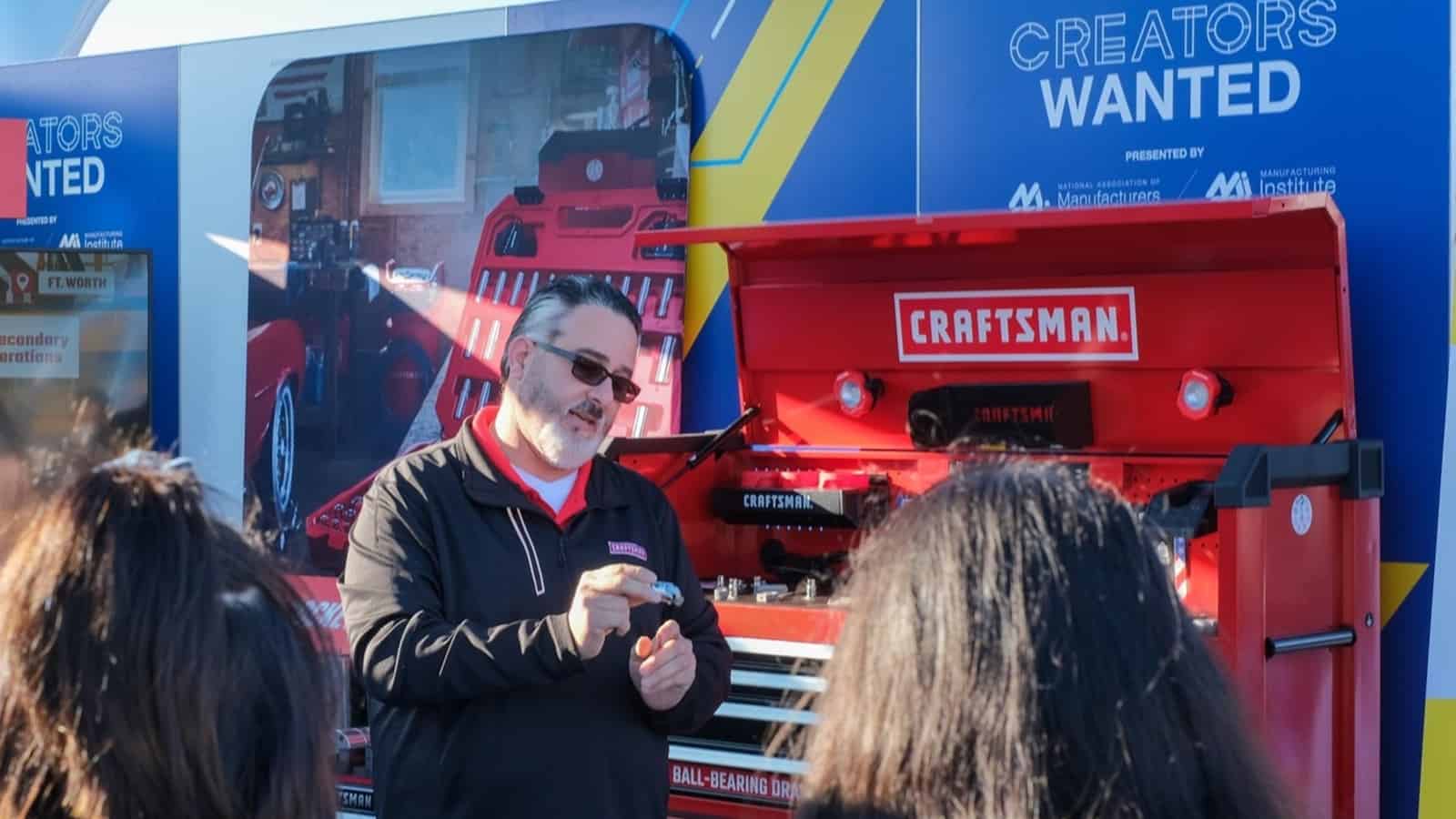
Students from Young Men’s Leadership Academy listen as Khristopher Kuker, plant manager, Dallas U.S. Windows Plant, Cornerstone Building Brands, lays out potential career paths at the company.
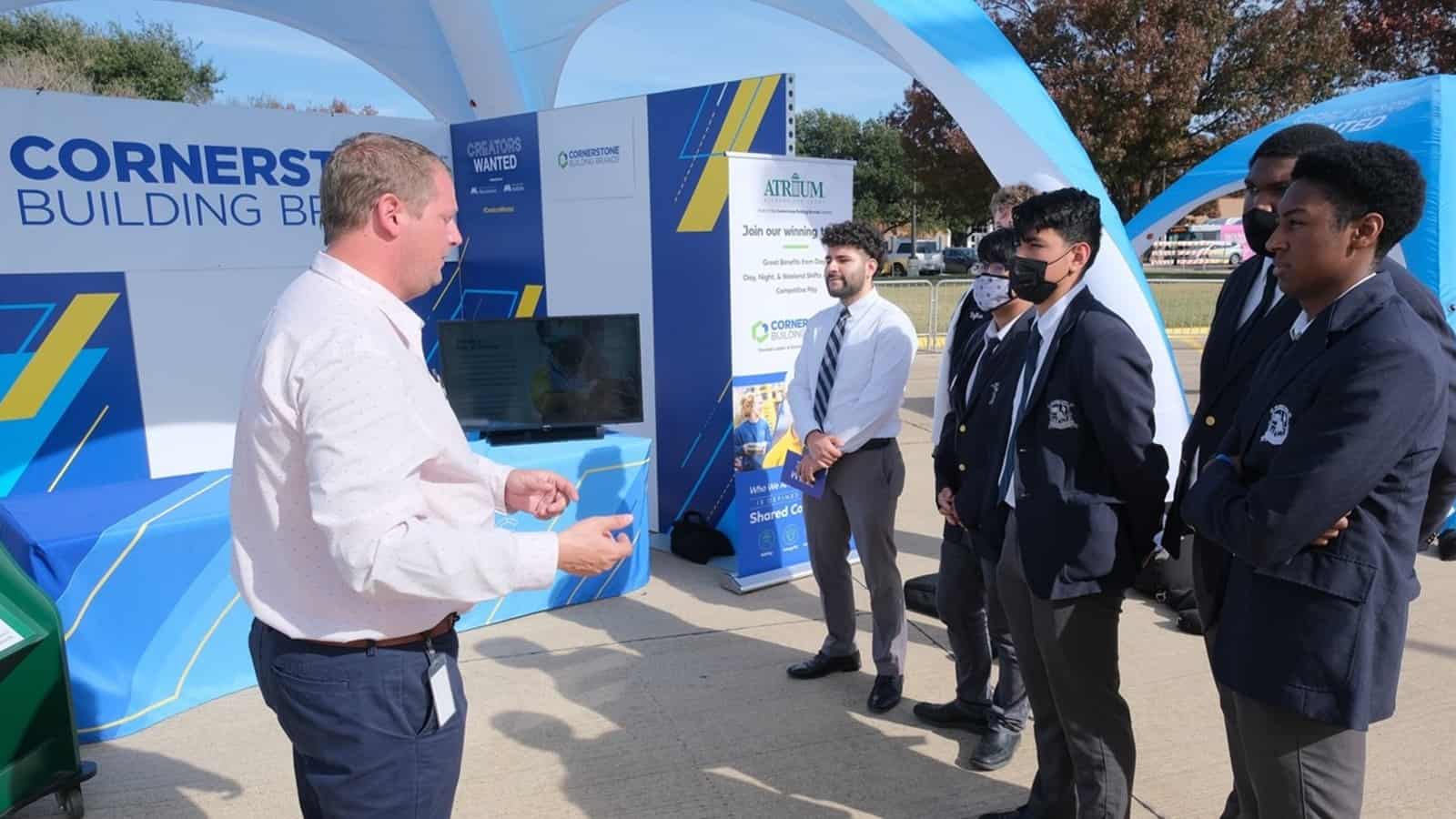
CRH brought crafts to the table, giving students a chance to connect one of its products, Sakrete concrete, with some of the attributes of manufacturing careers.
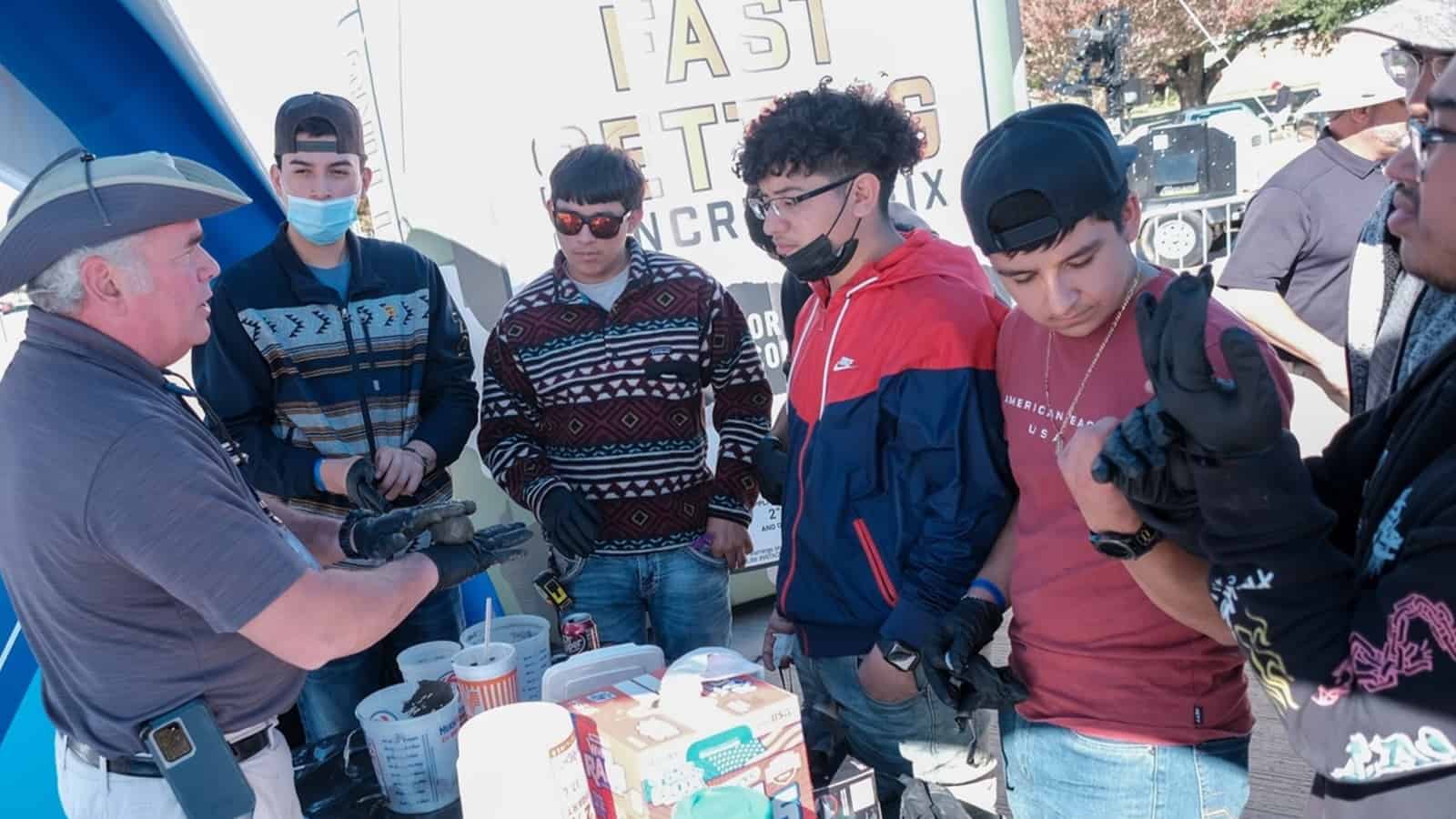
A student from North Crowley High School reacts to PTC’s augmented reality software.
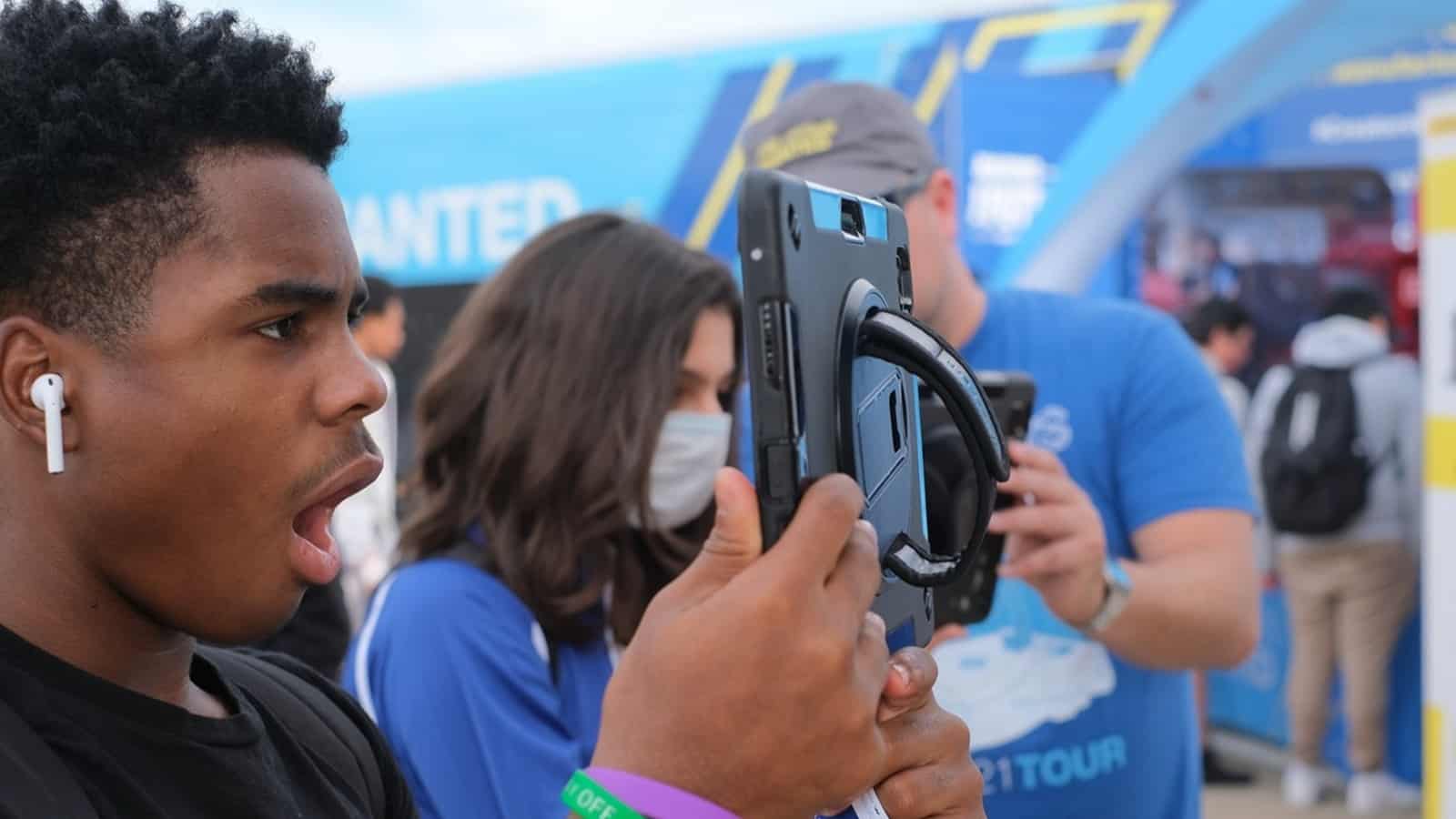
The race to the future had students working together to correctly identify the Honda vehicle from hints “left” inside the immersive experience from design, engineering and testing Honda associates.

On stage, Specialty Packaging President Hank Dorris and his mentee, Brian Wade, emphasize the importance of mentorship to students at Jacquet Middle School. Dorris, whose company makes products for companies such as Dunkin’ Donuts, Sonic, Chili’s and Wrigley, was personally instrumental in bringing the tour to Fort Worth, marshalling major school districts and key partners to engage as many students as possible.
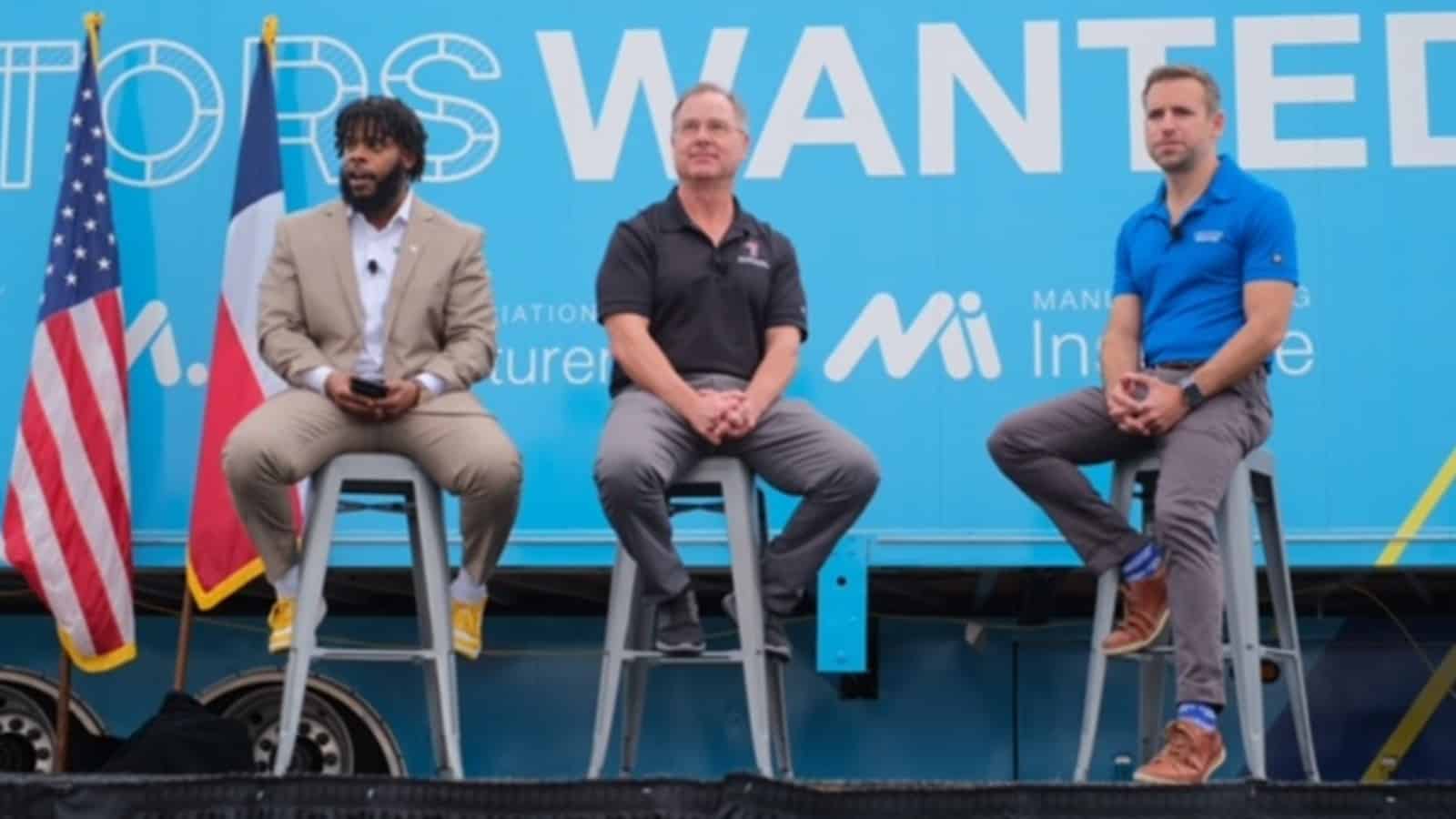
The social media response: School participants, including Tarrant County College and Kennedale Career & Technical Education, tweeted photos of their students learning about manufacturing careers—and having a blast doing it.
TCC has been proud to partner with @FortWorthISD, the @ShopFloorNAM and @TheMfgInstitute to host the Creators Wanted Live Tour. Students have had the chance to interact with manufacturers in entertaining ways during this innovative experience. Learn more: https://t.co/lZBSNd51HD pic.twitter.com/kFDY8Ewfq2
— TarrantCountyCollege (@TCCollege) December 2, 2021
A group of KHS students were able to go and check out #CreatorsWanted today and learn about careers in manufacturing!! #CTE @urkhsprincipal pic.twitter.com/nh7uBCJPMd
— Kennedale Career & Technical Education (@KennedaleCTE) December 3, 2021
The tally: In addition to more than 1,000 students who joined the tour, the tour stop helped Creators Wanted move beyond 153,000 email signups from students and other individuals interested in manufacturing careers and exceed 138 million digital impressions.
The last word: The Creators Wanted Tour Live had such a positive reception it was invited for an encore. Said Woodard: “You guys rock. Come back and see us.”
